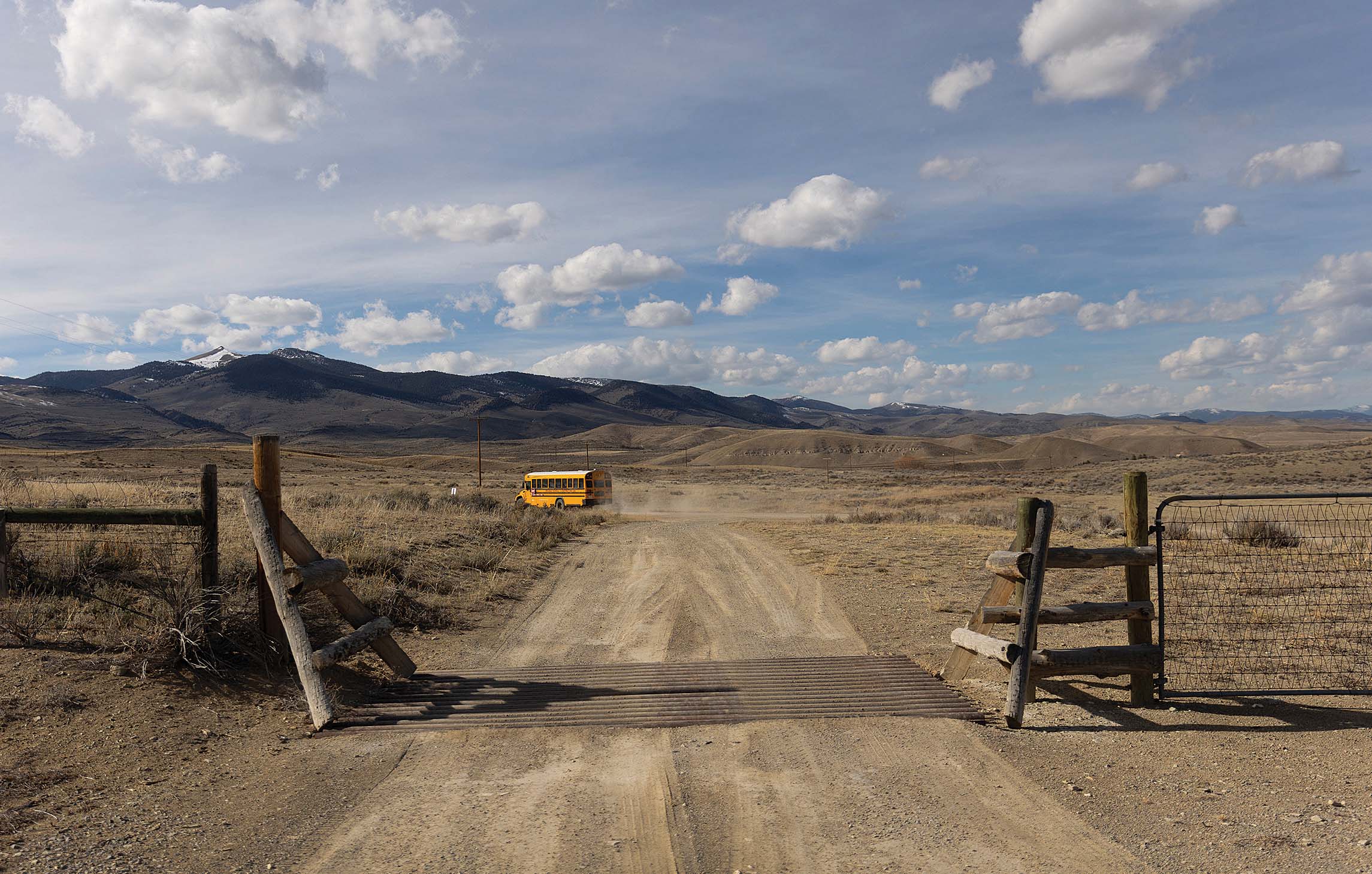
25 Sep Images of the West: Snapshots in Time
In the spring of 2024, I contacted the Gallatin History Museum in my hometown of Bozeman, Montana, looking for historical photographs of two country schools in the area, Malmborg and Springhill. I wanted to compare the old images with photographs I’d captured. Co-director Charlotte Mills answered and responded with the salty, unabashed assurance of a fifth-generation Bozeman native: “You can come down and look, but they will probably look the same as what you have.”
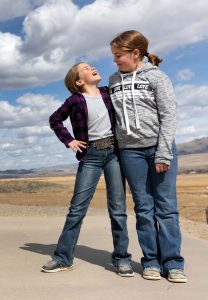
The daughters of former Reichle School student Chris Rieber stand for a portrait on the school playground. Rieber’s father, sister, brother, and son also attended the school.
I’ve been a professional photographer in Montana for more than 20 years, and some stories continue to call me back: I last covered one-room schools in 2013. This time, though, I hoped to learn more about Montana rural schools in light of the modern American experience.
At the museum, current photographs of both schools — each established in the 1880s to serve farming families — are true to their original identities: Malmborg, with its octagon-shaped structure and barn (where children once kept their horses), and Springhill, with its charming white exterior and two front doors (previously used as separate entrances for boys and girls).

Teacher Becky Jensen has worked at Reichle School, a country school in Glen, Montana, for over 25 years.
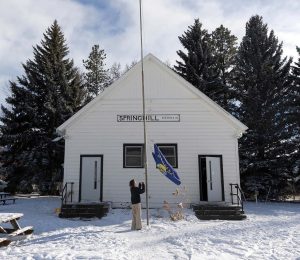
A student lowers the Montana flag at the conclusion of the day at Springhill School in Belgrade.
Today, Malmborg operates as a one-room, kindergarten-through-eighth-grade school with seven students and one dog. Springhill is a two-room, two-teacher, 15-student kindergarten-through-eighth-grade school.
In Glen, a small ranching community in the Pioneer Mountains of southwest Montana, the morning sun casts long shadows across the vast expanse of open land.
On Schoolhouse Road, where pavement meets gravel, dust clouds obscure my perspective as I head toward Reichle School, which I photographed on assignment over a decade ago. The two-room schoolhouse has two teachers and 15 students, and everything appears the same since my last visit: the quaint red facade, the old-fashioned merry-go-round, the grandeur of the mountainous backdrop. Even the teacher, Becky Jensen, who has worked at the school for 25 years, is still in place.

Reichle students get their wiggles out at recess on the old-fashioned merry-go-round.
When she greets me at the front door, I linger for a moment, feeling like a child again, held in a benevolent spell. Like Oz’s Glinda, the good witch of the north, Jensen shepherds me toward the students reading outside at a picnic table with teacher Leah Tucker-Helle. Later, when I talk with Jensen on the playground, she agrees that the school is mostly the same. It’s just the students who have changed.
At the museum, in addition to photographs, I find newspaper articles with telling headlines dating back to 1970. One, from 1988 in the Bozeman Daily Chronicle, reads, “Hard work, rewards at a one-room school;” another, from 1992 in the High Country Independent Press, reports, “Springhill School students, teacher appreciate family-like atmosphere.”
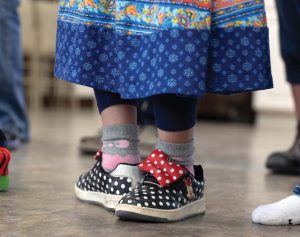
At Reichle School, and at many rural schools across Montana, students have the space to, as Gallatin County Superintendent John Nielson puts it, “be who they are.”
An online search uncovers national feature stories about Montana’s schoolhouses: among others, a 2023 National Public Radio story — “One-room schoolhouses are still a lifeline for rural communities” — that reported Montana has the greatest concentration of country schools in the U.S.
As I sit in the museum’s research room among old photographs and worn newspaper clippings, I realize many of the schoolhouse stories are similar, with narratives celebrating common ideals: a family-like environment, older student mentors, community, a low student-teacher ratio, and creative curriculums. And, I wonder, in a world of the 24-hour news cycle, with moment to moment refreshed content, why does the rural schoolhouse story never grow old?

Young Reichle students are enthusiastic and engaged during a classroom activity.
Mary Ellen Fitzgerald, age 82, has some ideas. She was the Gallatin County superintendent of schools from 2003 to 2015, overseeing the area’s rural schoolhouses. “With all the technological devices that kids have in their possession, with all the things such as TikTok and Instagram, I think we have a different child now in education than we have ever had before,” she says. “I’m not a fan of social media. In the rural school, you put the devices away, and you talk to one another. You go out on the playground, and you play with one another.”
Current Gallatin County Superintendent John Nielson speaks to the timeless aspect of rural schools: “I would say the beauty of the small rural school is that the students are all doing different things [in the classroom]. Or they are doing the same thing at different levels, and so, there’s all this space to let them be who they are.”
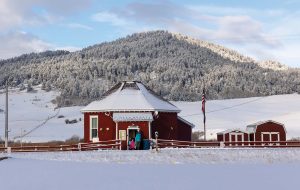
Teacher Alison Bramlet and her students head into Malmborg School at the start of the school day.
“To me,” Nielson says, “education is 100 percent about relationships, and being a great teacher means you are connected in some way to every student.” It seems like simple math to deduce that in the rural school — where there are fewer kids per teacher, one teacher for the entire day, and consecutive years with that same teacher — there’s more time to build connection.
But the equation doesn’t always add up. Nielson, previously an elementary school teacher in a traditional classroom, is realistic when he says that there are educators in urban schools who connect with every student, and there are also teachers in rural schools who don’t.

At Malmborg School, Bramlet incorporates lessons about baby chickens into the curriculum.
Finally, I take my questions to the students. When I ask what is unique about their rural school experience, it’s not easy for them to have insight without hindsight. For example, a 12-year-old at Springhill answers, “We get Fridays off.”
“Yes,” I say. “I used to say I loved PE the most.”
“But you probably didn’t get Fridays off.”
One former Reichle student, rancher Chris Rieber, does have hindsight. To him, the rural school experience has become more than just Fridays off. To Rieber, it’s about quality education and continuing a family legacy: Rieber’s father, sister, brother, and son were students at the school. Today, his daughters, Reagan and Kristian, attend.

A student enjoys the monkey bars at Springhill School in Belgrade.
While I’m taking pictures on the playground at Reichle, I hear a child in my periphery. “I feel so free!” he calls out as he flies high on the swings. Perhaps I am romanticizing, but from where I stand, here at a rural schoolhouse in remote Montana, I can see that the simple joy of swinging — of rising and falling, back and forth, over and over — hasn’t changed.
Maybe, I think, that’s the fresh take on the country schoolhouse story: despite the changing world, it remains — mostly — the same.
Janie Osborne’s experience covering the West began over 20 years ago when she published a small alternative newspaper in Bozeman, Montana. Today, a photojournalist, she is still based in Montana (with a family), and continues to cover projects that explore life in a rural mountain state. Osborne is a longtime contributor to The New York Times, The Wall Street Journal, Associated Press, and others.



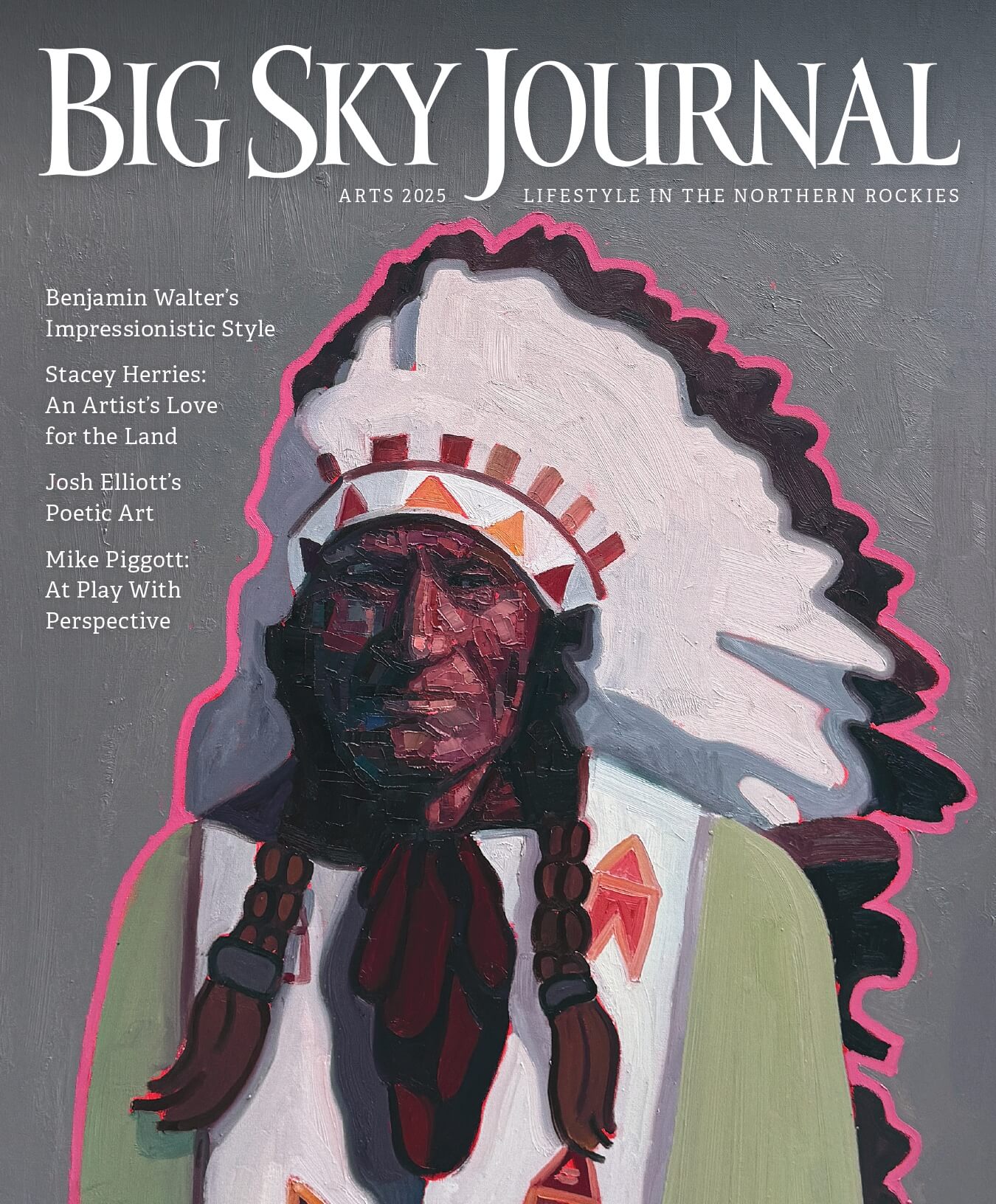
No Comments